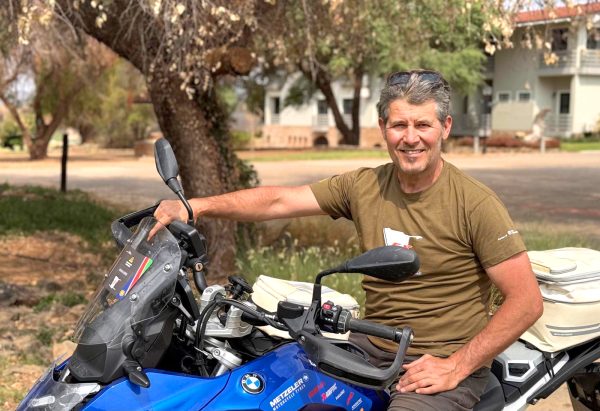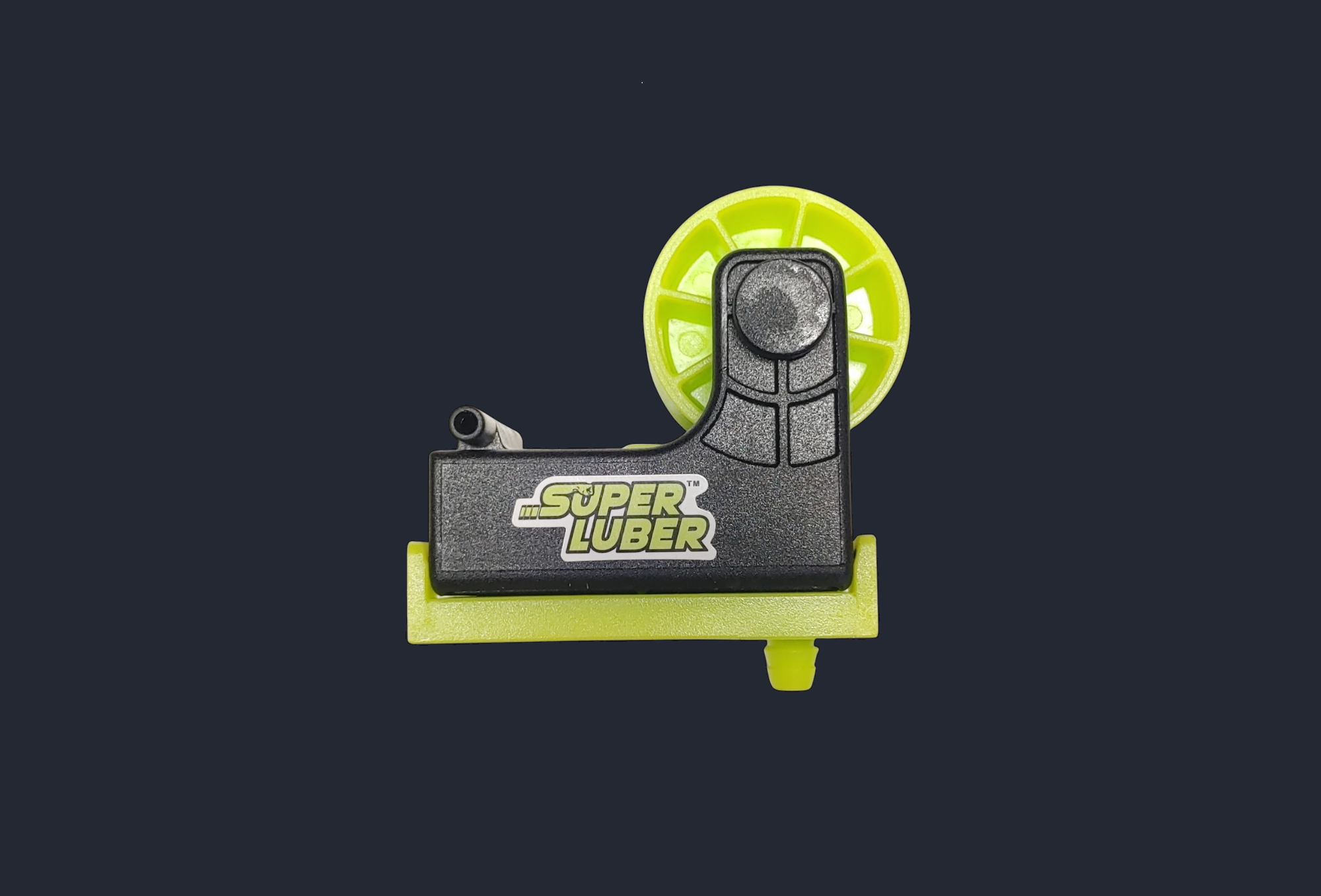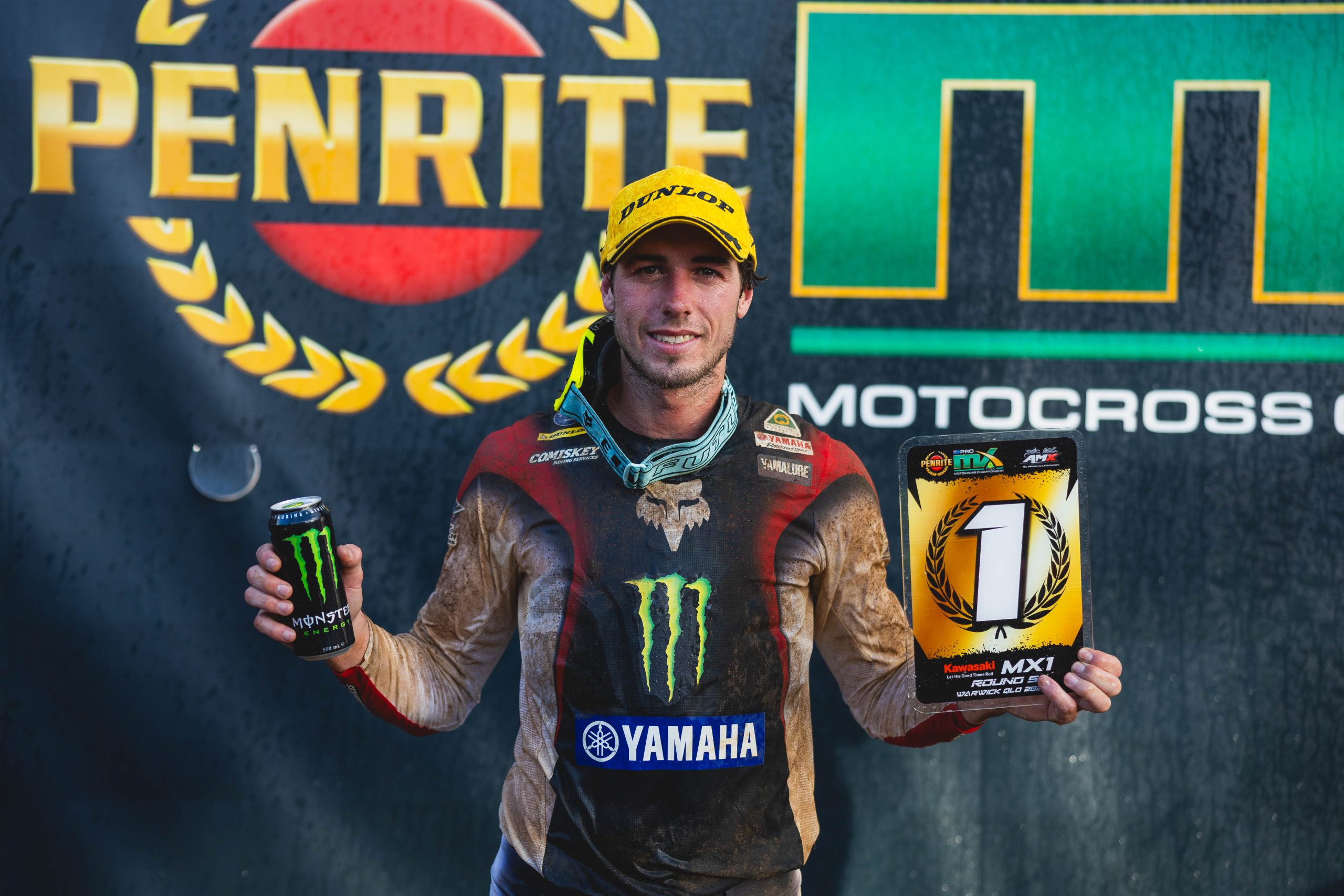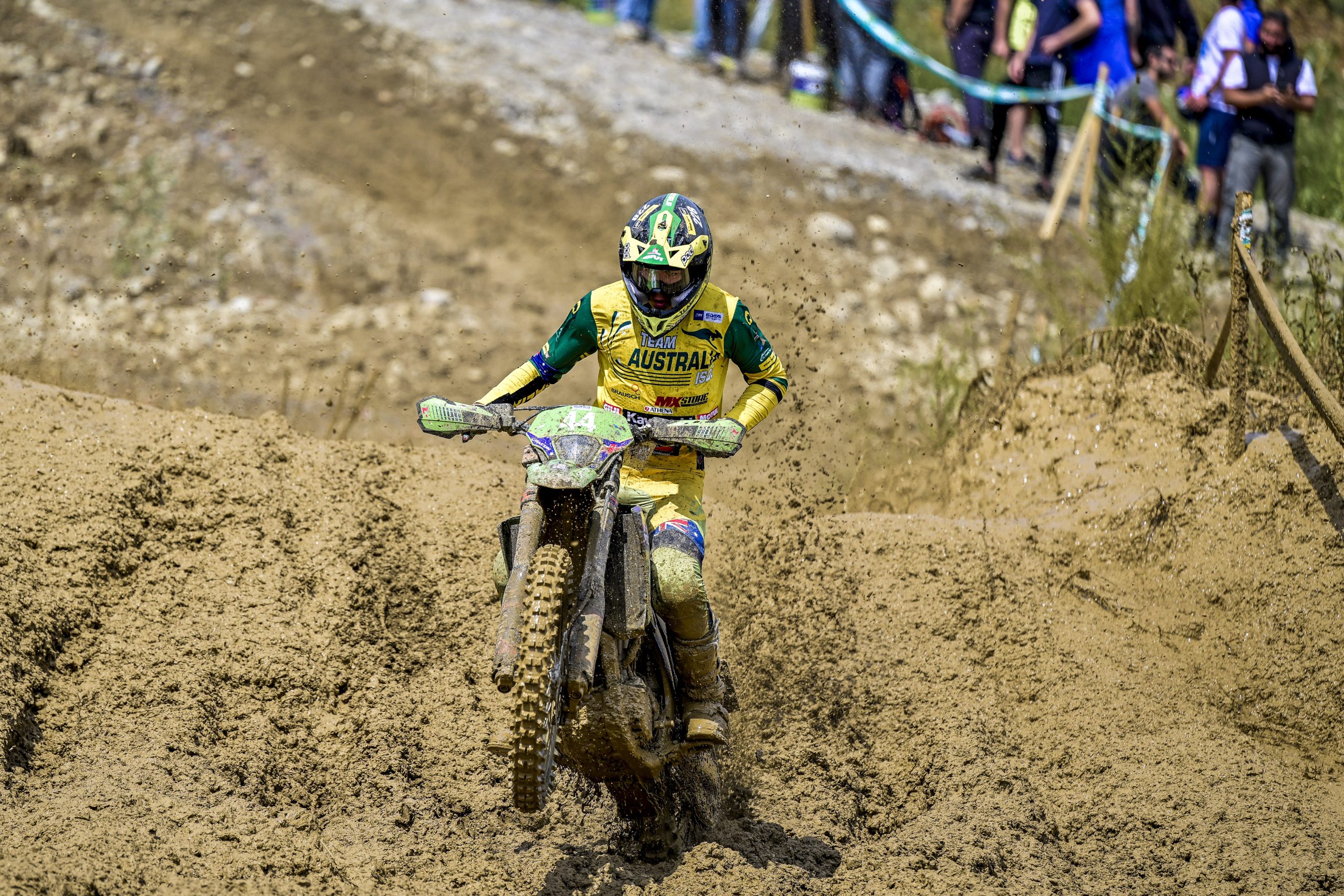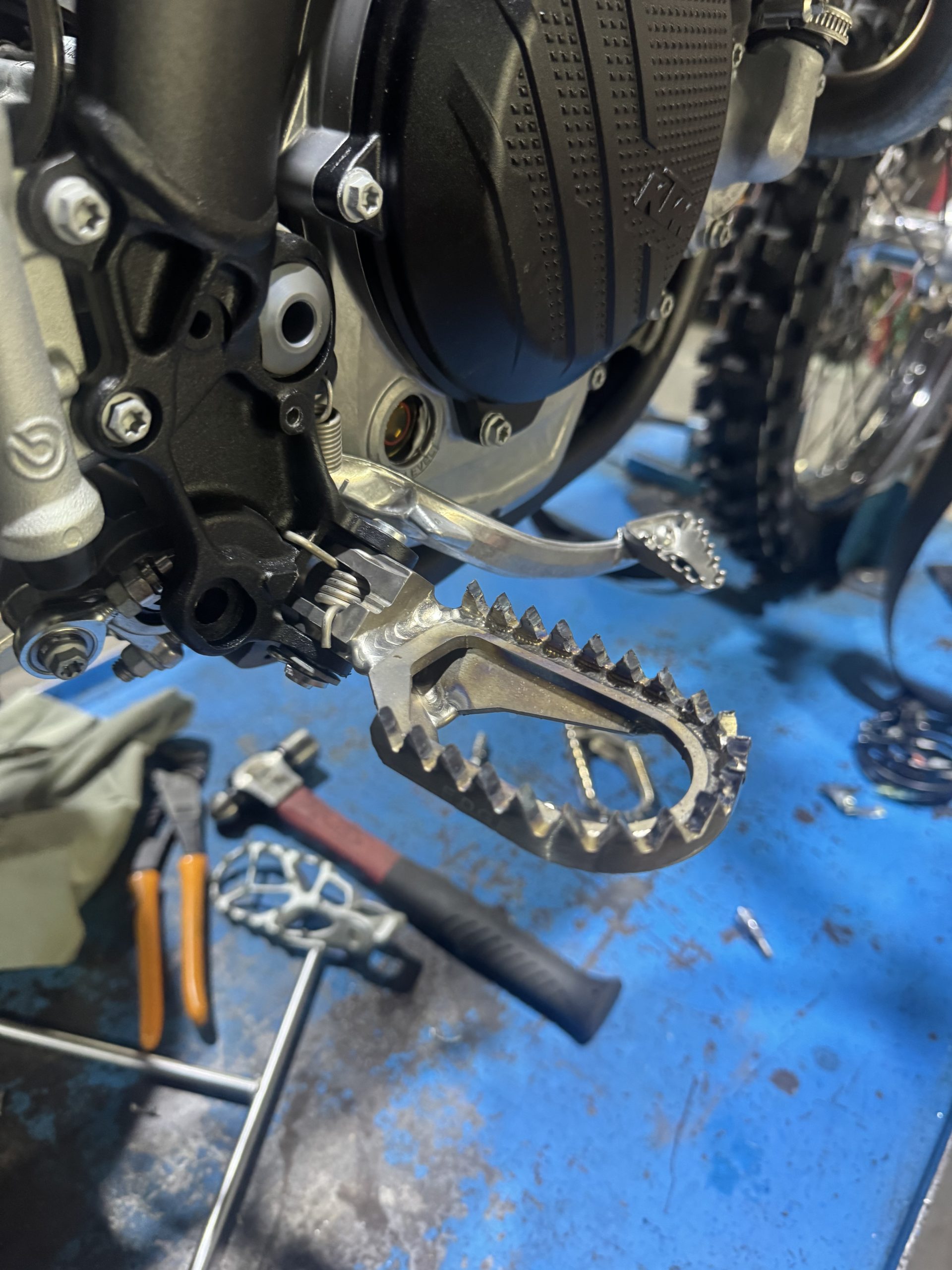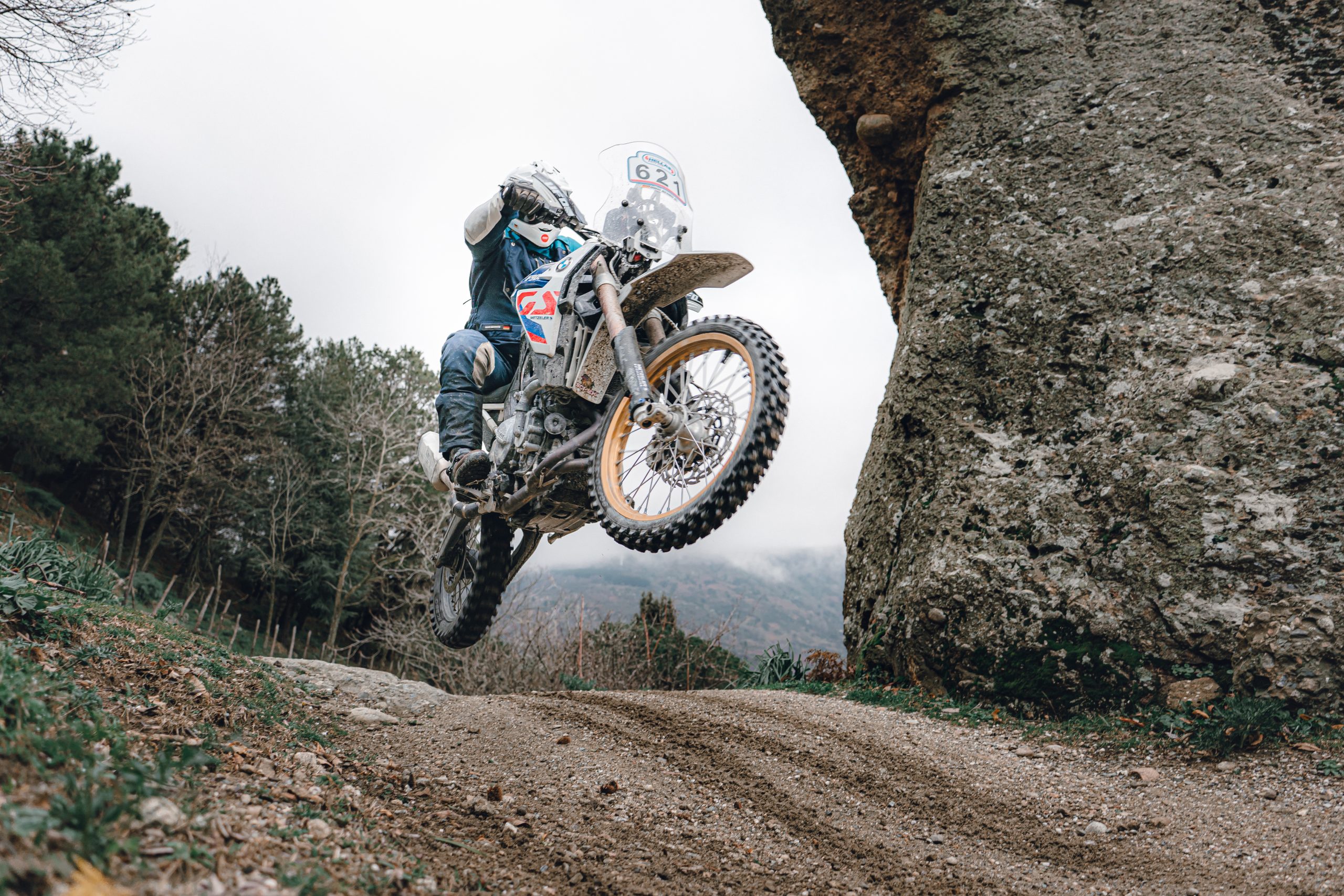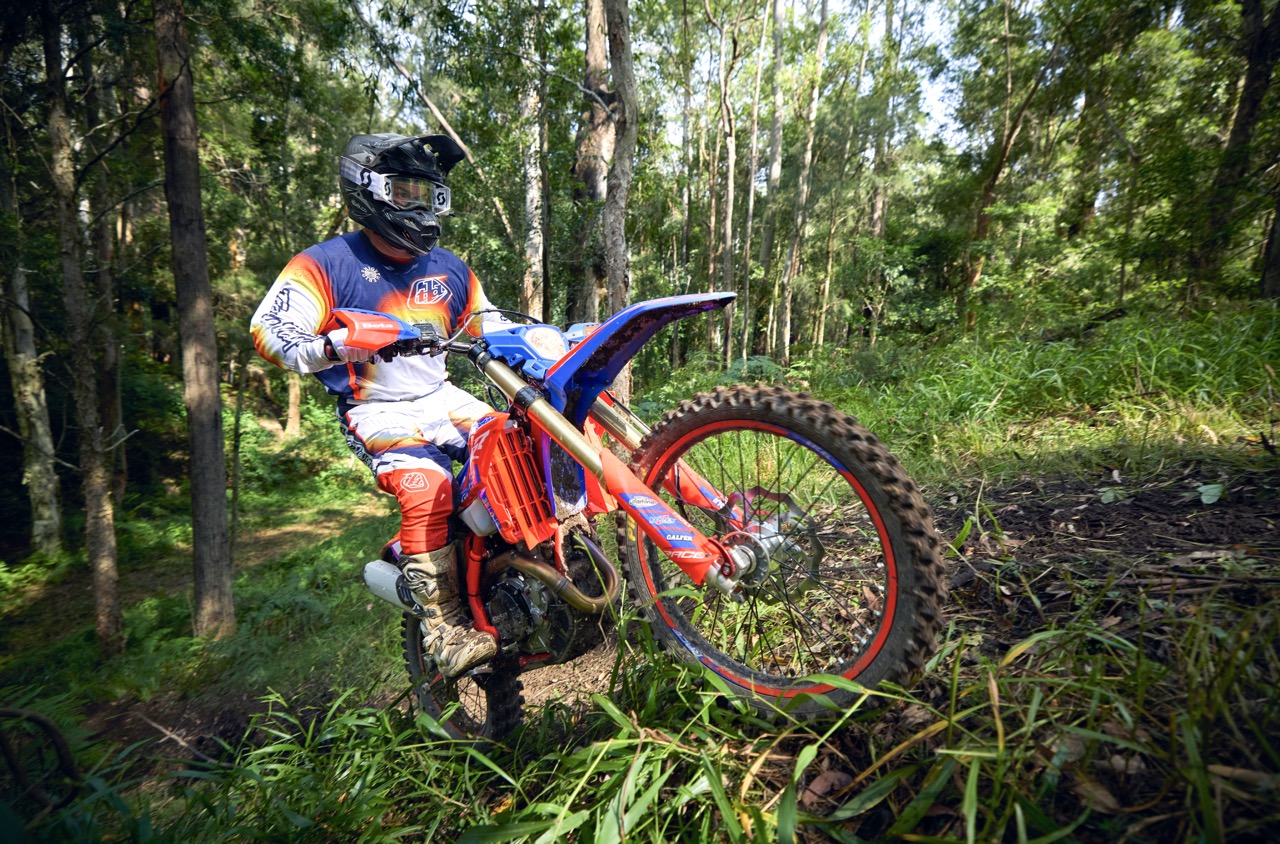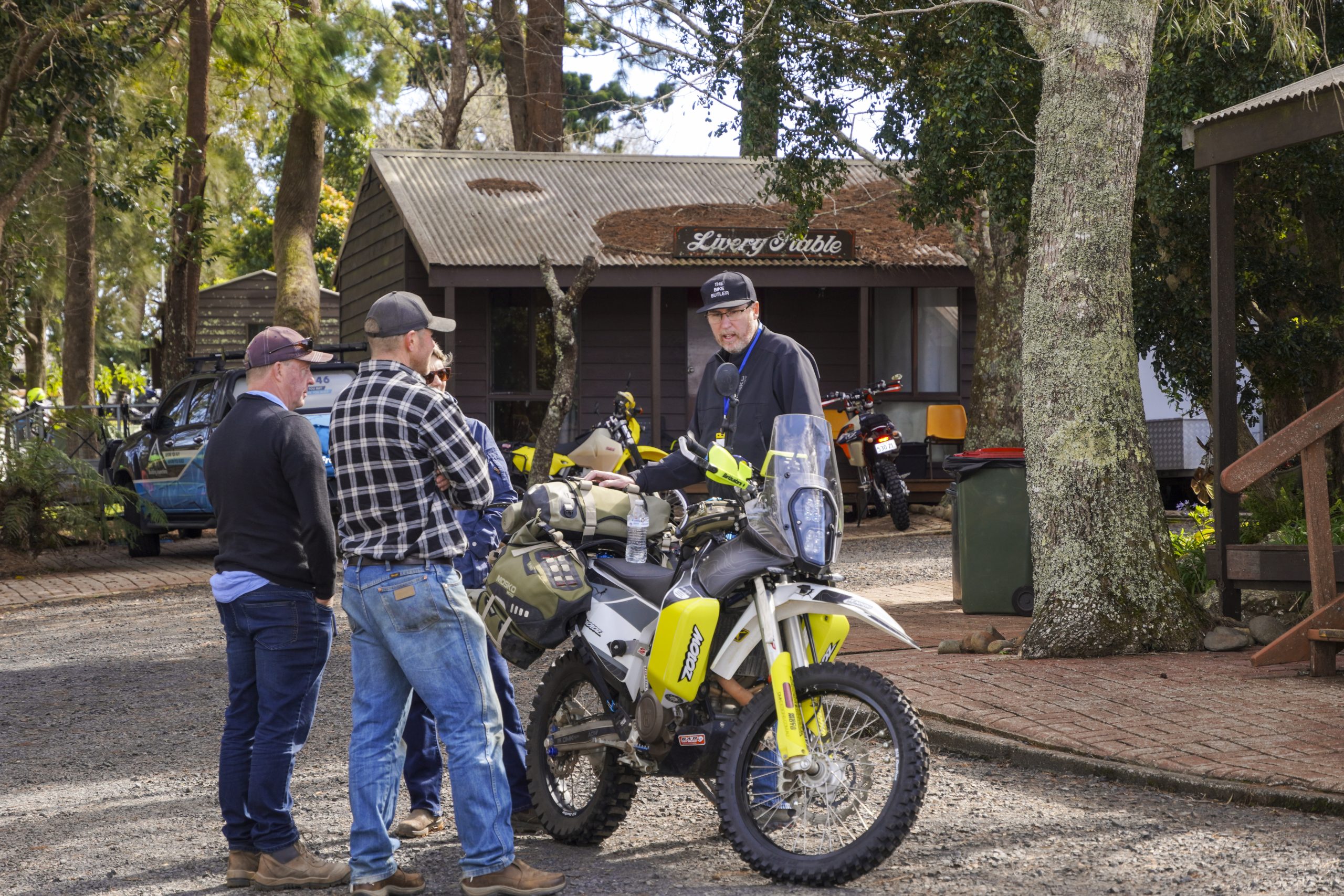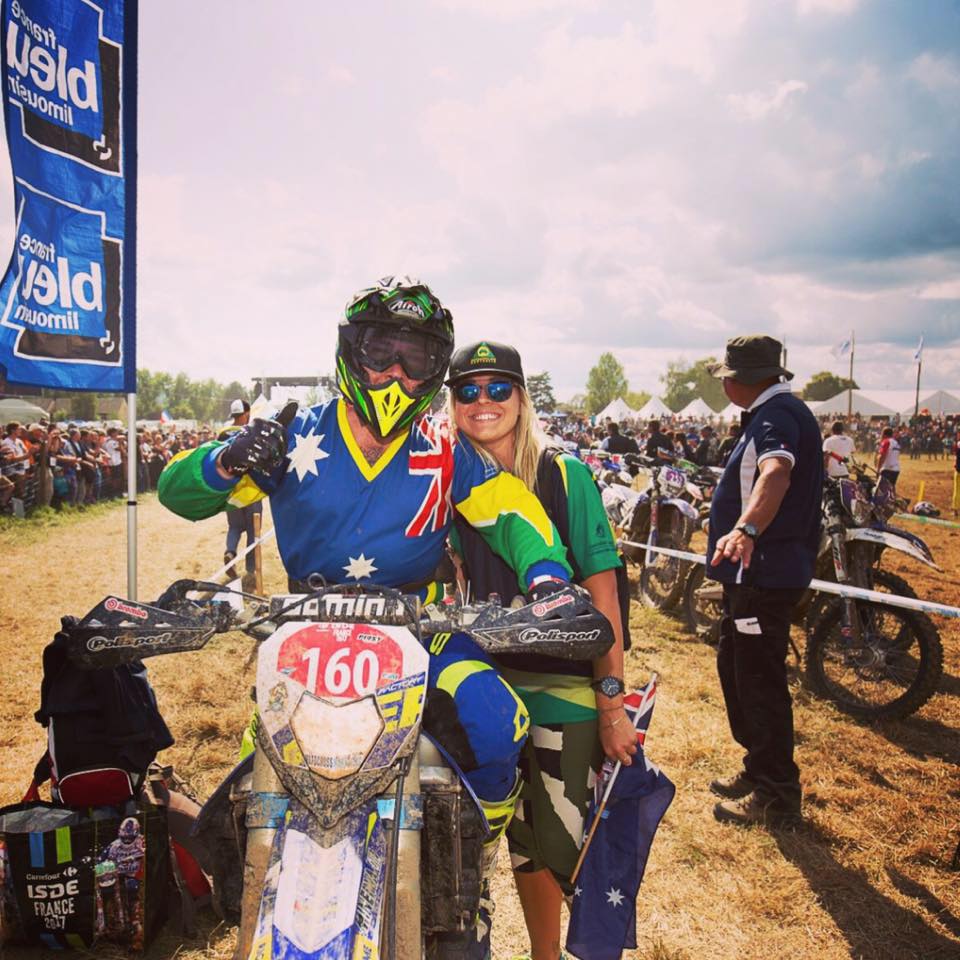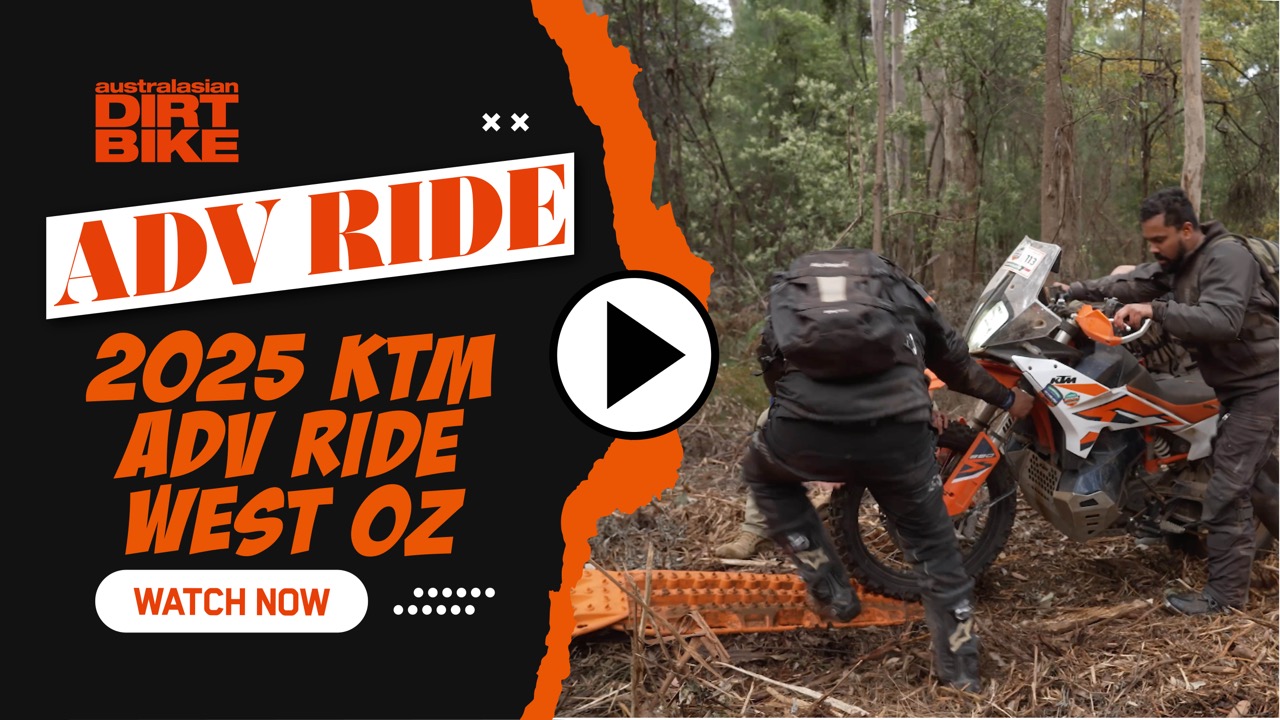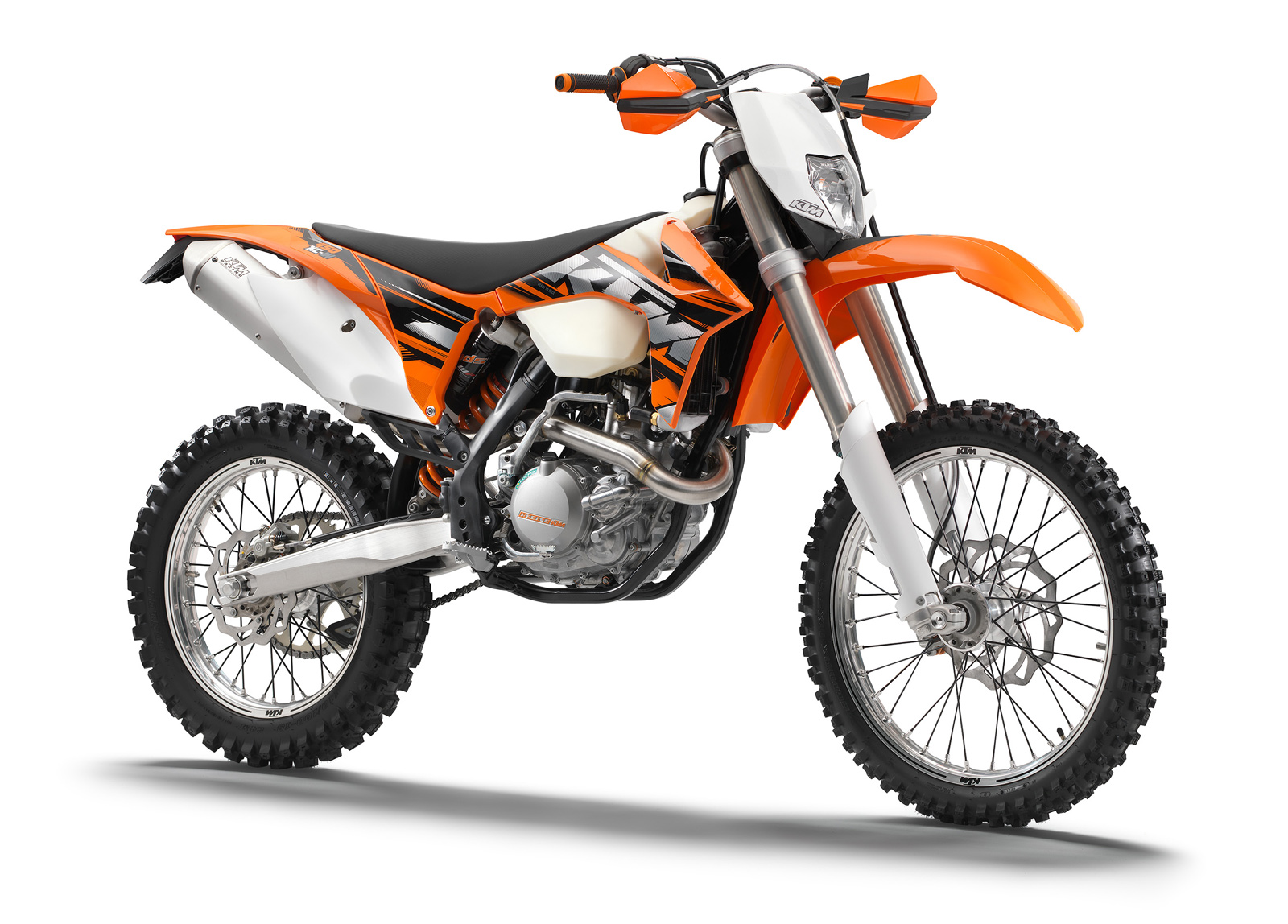Now into its ninth running, this year the International 2024 BMW GS Trophy took place in Namibia with 16 men’s and six women’s teams battling for victory between the Kalahari Desert and the Atlantic Ocean
In times when many motorcycle manufacturers like to do their product presentations online, an expensive marketing project like the BMW GS Trophy has become a rarity. BMW Motorrad shipped 120 bikes to Namibia for this year’s edition, with marshals, guides and other personnel from Munich and around the world travelling for weeks at a time over the past two years to prepare for the event in a country with the second lowest population density on the planet after Mongolia, the venue for the 2018 Trophy.
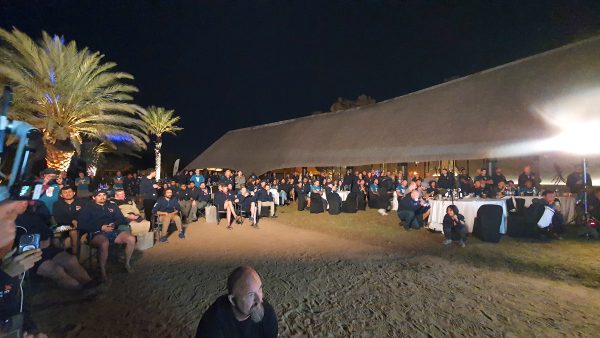
After participating in this year’s highly exclusive off-road adventure, I was curious about how the cost-to-benefit ratio stacks up when it comes to strengthening the BMW GS brand?
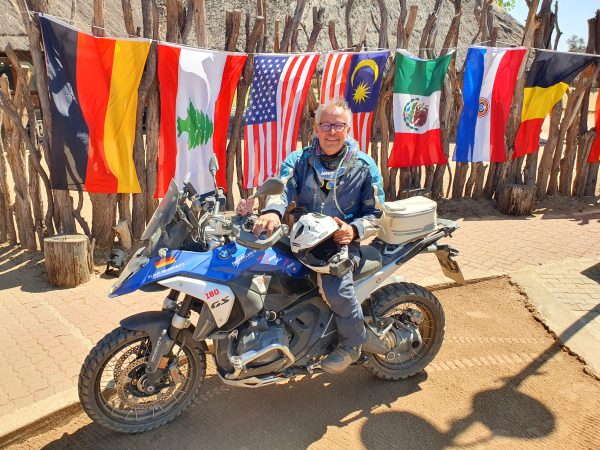
After the fourth stage of the GS Trophy, I found myself enjoying a colourful sunset by the Atlantic Ocean in Swakopmund with a Namibian Rock Shandy in my hand. Next to me was BMW Motorrad Managing Director Markus Flasch, who up until now had mainly been riding fast roadbikes, but since the beginning of the year has been training for the sandy tracks of Namibia in BMW enduro parks. Respect!
I asked Markus, “Do you still need the GS Trophy to boost sales of your best-selling R 1300 GS?”
“The 1300 GS is clearly one of our most important models and we are very satisfied with the sales figures,” Flasch responded calmly. “We don’t need the Trophy primarily to promote sales of the GS, but we do need it to revitalise and celebrate the global community around the bike and the GS spirit. The Trophy is therefore of great value to us.”
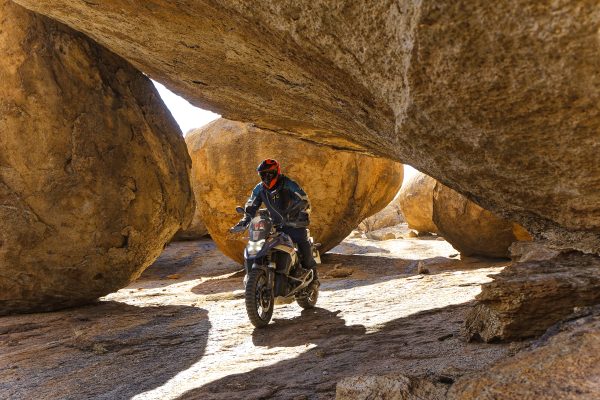
And there is no doubt the community spirit at the Trophy is phenomenal. The ‘Once in a lifetime’ event is now a second time for me, after having been on the Albania 2022 event.
Between participants, marshals and staff in Namibia, 200 hundred people from a total of 33 nations are bustling around the bivouac, and rarely has an international get-together felt as cosy as here on the beach in Swakopmund – it’s bitingly cold and we gather around the campfire like penguins. For a former racer like me, it’s impressive to see the Trophy competitors hugging each other and celebrating this unique experience of community around the GS. Admittedly, a week in a carefree motorcycle bubble in which ugly news from other parts of the world can’t reach you can have an effect like this on an international crowd.
This year the route through the Namib Desert and the Kalahari Basin totalled 1350km, with the longest of the six stages from Swakopmund to our base at the Midgard Country Estate near the capital Windhoek covering almost 450km, and almost all of it off road. Here the notorious, seemingly endless gravel tracks stretch for dozens of kilometres in a dead straight line through the desert. Some of them are up to 20m wide and mostly perfectly maintained by graders, but these flat gravel pads can also offer some sneaky surprises: the consistency of the surface can change abruptly and rocks can become dramatic stumbling blocks in the soft sand. Therefore, as on all routes in Africa, maximum concentration is required, and you can’t take your eyes off the track for even a fraction of a second!
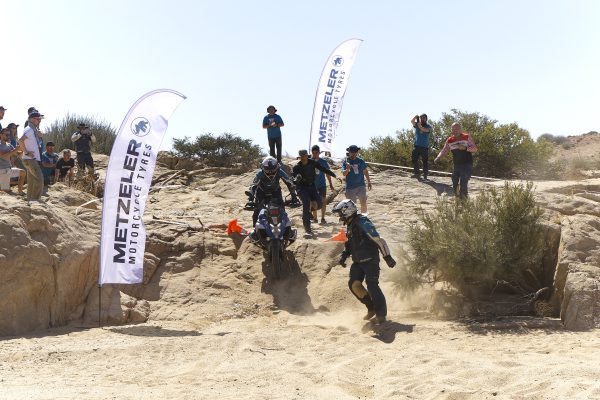
I was at the Trophy 2024 with a team of around 15 media representatives and was riding an R 1300 GS, allowing me to look over the teams’ shoulders at close range, and inhale their dust as we rode in groups of up to 10 bikes to the next special stage on the long connecting legs. The 16 men’s teams consisted three riders each and the six women’s teams of two riders, all battling for victory in Namibia. South Africa had won the men’s competition four times in a row, so it was time for a change…
To do well in the Trophy, you have to find the right compromise between competition and community. Teams from China, Japan, South Korea and the Middle East, among others, populated the paddock, as well as riders from Latin America, Mexico and Eastern European countries. As Markus Flasch had already mentioned, it’s all about community.
This was particularly evident on the morning of the second day: from the Rock Painting Lodge Ai Aiba, a winding sandy 4×4 trail led through the beautiful rocky landscape of the highlands. However, after just a few bends and the passage of a few bikes, the ground had given way and the riders were faced with deep ruts in bottomless sand, just like the stragglers in the Dakar. In the lee of the mountains, there was no breeze to blow the impenetrable clouds of dust out of the canyon, and the riders forged their way forwards a hundred metres at a time until another bike ended up lying in the dirt, with the teams having to fight their way through bit by bit. In the end, the 40km route, including two special stages, took almost five hours to complete.
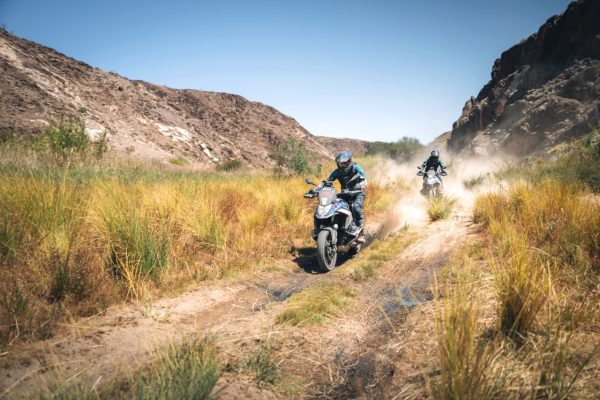
It was tough going in the difficult conditions and several of the men’s teams had to hep the women’s teams to get through, and as time was of the essence the organisers led by Steffi Grund and Tom Weinmayer reacted flexibly and rearranged the groups. The women’s teams took a simplified route to the camp at Spitzkoppe, while the men’s teams stuck to the original route.
I followed the German and French men’s teams on a brisk ride over technical desert tracks towards Spitzkoppe for over three hours. It was a unique experience to play with the best teams in the GS Trophy and to observe how respectfully the sporting opponents treat each other. Strong crosswinds blew the dust right off the track, allowing the GS to be ridden easily at the perfect speed it needed to float across the sand. The Metzeler Karoo 4 tyres, which were developed specifically for the 2022 Trophy in Albania, also proved to be the perfect rubber for the GS in Namibia: there could hardly be a better tyre for the R 1300 GS at the moment for those chasing stability and exceptional handling while riding fast.
On a few stages I had the opportunity to ride directly behind the marshalls who were riding F 900 GSs. While I was able to cruise almost one-handed with the big boxer over gravel with sand drifts, they were constantly battling with the twitchiness of their 900s, a bike with a more nervous chassis than the R 1300 GS.
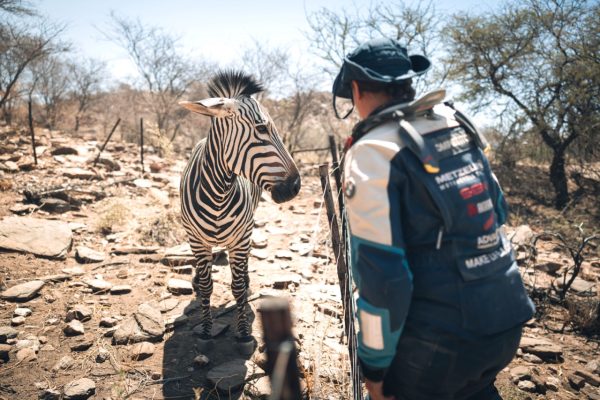
The entourage camped for two nights among the monolithic rocks beneath the Spitzkoppe, consisting of reddish-brown granite that towers 700m above its surroundings and, thanks to its distinctive shape, is also known as the ‘Matterhorn of Namibia’. A particularly difficult stage with a 40km-long passage through the dry riverbed of the Omaruru River asked for the highest riding skills and fitness from the participants.
At the end of stage four in Swakopmund, the German men’s team was in first place with a slight lead over South Africa. During the stage, I spent time following the petite and small Japanese and Korean women and it was impressive to see how they juggled the more than 230kg GS through tough terrain. Yumi Takamoto from Japan, who is only 154cm tall, demonstrated particularly elegant riding manoeuvres… until one foot couldn’t make it to solid ground in time to hold the GS up. The strong will, tenacity and strength of all the women to hoik the big GS upright again was always remarkable.
On a stadium-like terrain, the marshals around Chris Zimmermann had devised a course for the final special stage into which all of the team’s riders entered simultaneously on parallel tracks, and then rode through the technical section one after the other towards the finish. Double points were awarded on the final day, meaning that all the women’s teams still had a chance of winning, or at least finishing on the podium. After a convincing performance, the international team of Malgorzata Jakubiak from Poland and Anna Cardová from the Czech Republic won ahead of Japan and France.
There was drama in the men’s final test, with many teams having serious trouble in a high banked bend with soft sand. When they got stuck, deep trenches and holes were cut into the surface, resulting in a chopped up track for the final three teams from Brazil, South Africa and Germany. There was dead silence in the natural stadium as the best teams battled it out for victory. In the end, the German team came out on top with a flawless performance, bringing the trophy back to Germany for the first time since they won in South America 2012.
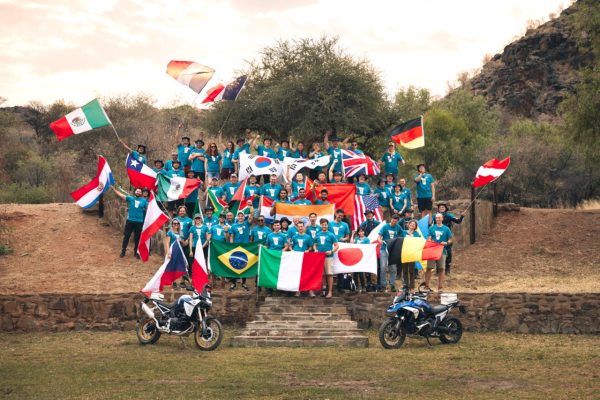
BMW Motorrad International GS Trophy 2024, Namibia.
Final standings:
Male Teams:
1. Germany, 283 points 2. South Africa, 223 3. Brazil, 177 4. France, 153 5. UK, 150 6. Latin America, 147 7. Italy, 145 8. International Team, 140 9. China, 139 10. India, 34 11. Benelux, 125 12. South Korea, 117 13. Japan, 112 14. Mexico, 107 15. USA, 94 16. Middle East, 93
Female Teams:
1. International, 278 2. Japan, 273 3. France, 267 4. Germany, 263 5. South Korea, 249
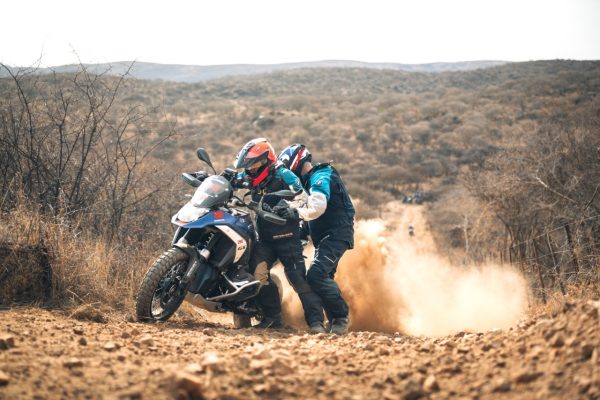
A LONE AUSSIE
Long-time BMW Motorrad ambassador Miles Davis was one of the marshalls on the BMW GS Trophy in Namibia. The 56-year old has an impressive resume; he is a Level 2 Motorcycling Australia Coach and a BMW IIA Certified Instructor.
“I have been riding bikes for over 40 years, coaching off road for over 20 years. A bit of racing also,” he says.
“I was a professional downhill mountain bike racer plus I did some MX, Enduro and Supermoto competition. In 2017 I raced the Finke Desert Race on a BMW R 1200 GS and became the first rider to finish the race on a twin cylinder bike.
“I started riding adventure bikes around 25 years ago and really got the bug.
“After working in motorcycle magazines for seven years I became the National Marketing Manager for BMW Motorrad in Australia from 2006 to 2017. Now I am a BMW Motorrad ambassador. I have done over 40 BMW Safari events and I’m still involved in Safari, BMW Off Road Training and have been involved with GS Trophy since 2018 in Mongolia, followed by NZ, Albania and now Namibia.
“I love riding, guiding tours and coaching people. I take it very seriously because of the potential risk, but because I enjoy it so much it really doesn’t even feel like a job.
I have ridden in some incredible locations and met some great people; I feel very lucky!”
